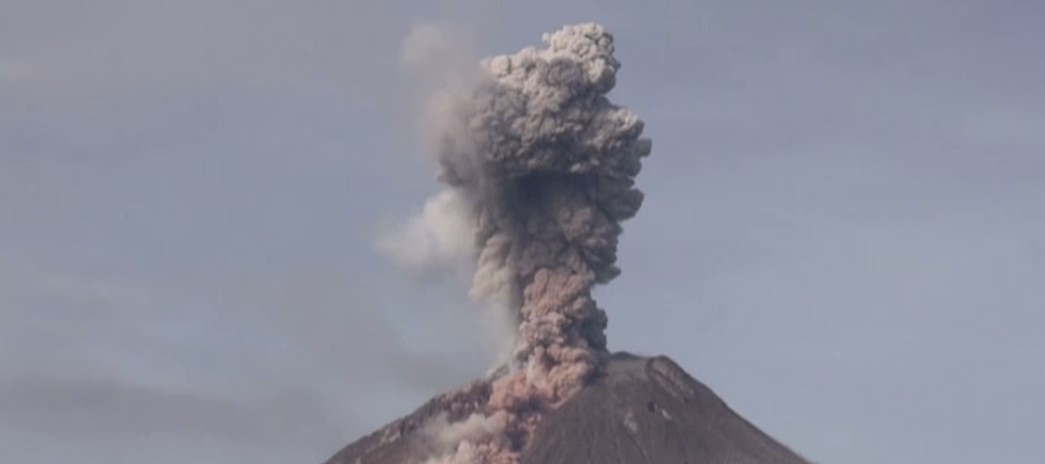Activity at Indonesian Mount Sinabung remains high

Volcanic activity at Indonesian Mount Sinabung remains high. Late Monday, January 16, 2017, the volcano spewed ash up to 5.5 km (18 000 feet) above sea level and produced a large pyroclastic flow, reminding everybody why tens of thousands nearby residents had to be evacuated.
According to the Darwin VAAC, ash drifted to the south but was not immediately visible on satellite imagery. Aviation Color Code remained Orange.
Volcanologist Armen Putra, head of Mount Sinabung's observation post, said two eruptions took place at the volcano in the last 36 hours. The first took place at 06:35 UTC (13:35 WIB) on January 16 while the second, a much stronger one, occurred at 23:27 UTC (06:27 WIB, January 17).

The second eruption took place some 11 hours after a shallow M5.7 earthquake hit 40 km (25 miles) north of the volcano. There are reports of some damage to the nearby houses and there were blackouts in Berastagi City and several villages around the volcano. National disaster management agency (BPBD) said they are still collecting data but that, so far, there have been no reports of casualties.
Head of BNPB's Data Information and Public Relations, Sutopo Purwo Nugroho, said PVMBG is intensifying their observation of the volcano.
Sinabung's first eruption in known history took place in August 2010. It lasted about a month and had Volcanic Explosivity Index of 2.
Seismicity fluctuated until September 2013, when dense white plumes started rising 100 to 150 m (328 to 492 feet) above the crater. Sinabung's first major eruption in known history occurred on September 17, 2013 and the volcano remains active ever since. Tens of thousands have been evacuated.
Between February 2014 and May 2016, eruptions at Mount Sinabung claimed lives of 23 people.
Geological summary
Gunung Sinabung is a Pleistocene-to-Holocene stratovolcano with many lava flows on its flanks. The migration of summit vents along a N-S line gives the summit crater complex an elongated form. The youngest crater of this conical, 2 460-m-high (8 070 feet) andesitic-to-dacitic volcano is at the southern end of the four overlapping summit craters.
An unconfirmed eruption was noted in 1881, and solfataric activity was seen at the summit and upper flanks in 1912.
No confirmed historical eruptions were recorded prior to explosive eruptions during August – September 2010 that produced ash plumes to 5 km (16 404 feet) above the summit. (GVP)
Featured image: Eruption of Mount Sinabung on January 16, 2017.

Commenting rules and guidelines
We value the thoughts and opinions of our readers and welcome healthy discussions on our website. In order to maintain a respectful and positive community, we ask that all commenters follow these rules.